The 10 Worst Foods—and Drinks—for Athletes
Any athlete knows that what you get out of your body is a direct reflection of what you put into it. Advertisers know it, too—which explains the massive industry built up around sports nutrition. And while there is a place in the athlete's diet for energy bars and sports drinks, there's also the potential for the products to be misused—or for unhealthy ingredients to sneak their way in.
That's why it's important to check nutrition labels, read serving suggestions, and choose natural ingredients over processed or synthetic options whenever possible, says Jill Pluhar, R.D., a nutritionist with Brigham and Women's Hospital in Boston. For starters, these 10 foods may have you fooled by their healthy-seeming claims—but thanks to hidden fat or sugar (or worse!), you're better off leaving them on the shelf.
Vitamin Water
Vitamins and water. What could be more healthy than that? Plain old H2O, for one thing. “If you're going to take something, take a multivitamin—and get the rest of your nutrients from real food,” says Barbara Lewin, R.D., a sports nutritionist in Fort Meyers, Florida.”Otherwise, you can end up with much higher amounts that what's needed of some vitamins, and not enough of everything else.”
Plus, she adds, many flavored H2O drinks are filled with sugar, which can contribute to weight gain and hamper athletic performance, or artificial sweeteners, which have been linked to cancer and obesity. Most flavors of Vitamin Water, for example, contain 120 calories and more than 30 grams of sugar per bottle.
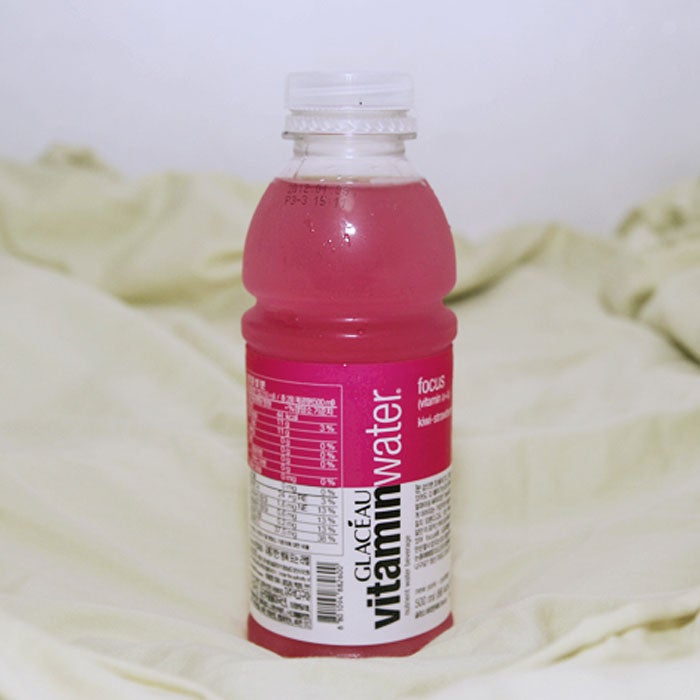
Plus, she adds, many flavored H2O drinks are filled with sugar, which can contribute to weight gain and hamper athletic performance, or artificial sweeteners, which have been linked to cancer and obesity. Most flavors of Vitamin Water, for example, contain 120 calories and more than 30 grams of sugar per bottle. (g,young shin/Flickr)
Fruit Juice
If you're in the habit of pouring yourself a big glass of OJ with breakfast every morning (or any type of fruit juice, for that matter), you may want to rethink your routine. “The only times I recommend fruit juice is when I have really underweight patients,” says Jill Pluhar, R.D., a nutritionist with Brigham and Women's Hospital in Boston.
“By the time juice is juice, it's usually been so processed that the majority of vitamins and minerals—and fiber—have been removed.” Stick with whole fruits instead, she adds, which have built-in portion control: about 60 to 100 calories per fruit. With juice, on the other hand, it's easy to pour yourself 200 to 300 calories in one sitting.
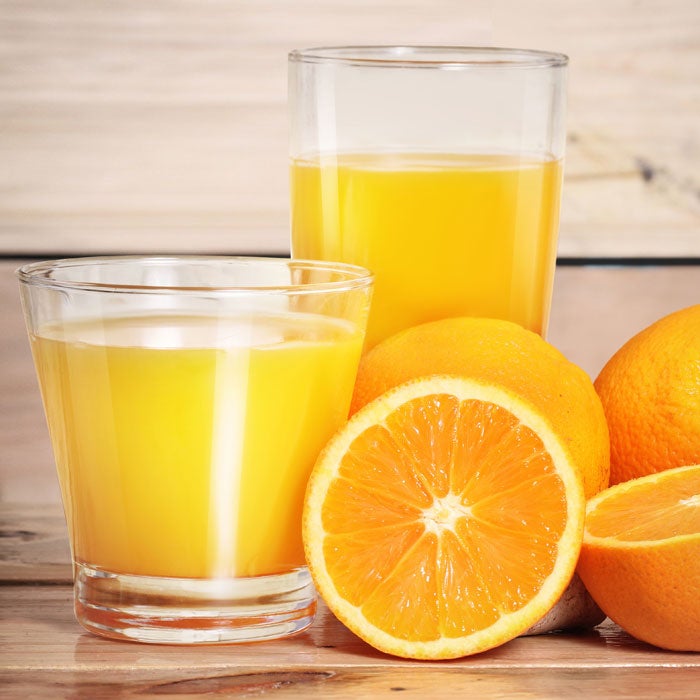
"By the time juice is juice, it's usually been so processed that the majority of vitamins and minerals—and fiber—have been removed." Stick with whole fruits instead, she adds, which have built-in portion control: about 60 to 100 calories per fruit. With juice, on the other hand, it's easy to pour yourself 200 to 300 calories in one sitting. ( Denphumi/Shutterstock)
Muscle Milk Lean Muscle Protein Powder
Lewin sees a lot of what she calls “this whole protein mess” when she deals with both novice and professional athletes alike. “After they work out, they think they have to drink a protein shake—and that's a mistake,” she says. “What your body really needs is carbohydrates and just a small amount of protein.”
Anything more than that basically has to be converted into carbs, she explains, which makes your kidneys work harder than they should have to. That doesn't stop brands like Muscle Milk, however, from perpetuating the myth. Their whey protein powder contain 32 grams of protein but only only 19 grams of carbohydrates per 310-calorie (2-scoop) serving—not to mention saturated fat and artificial flavors. On top of that, a 2010 Consumer Reports study found that Muscle Milk powders contained some of the highest heavy-metal contamination levels out of all the protein supplements tested.
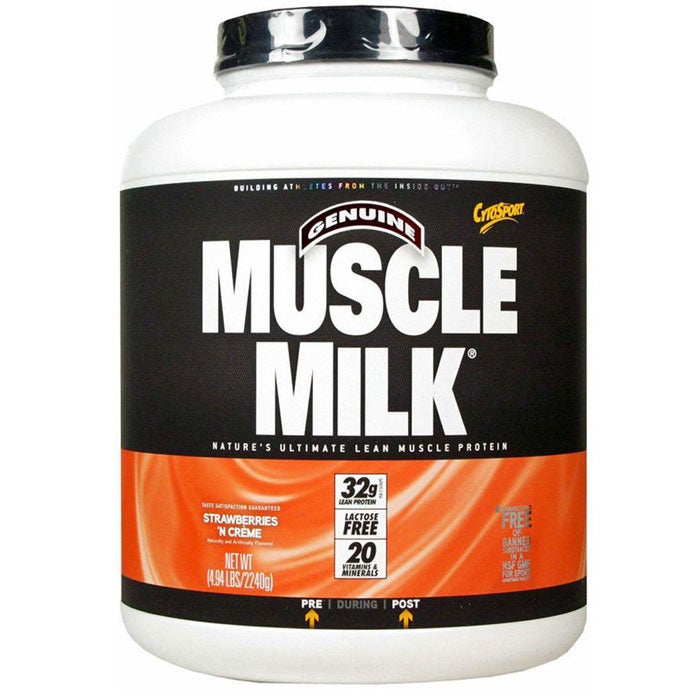
Anything more than that basically has to be converted into carbs, she explains, which makes your kidneys work harder than they should have to. That doesn't stop brands like Muscle Milk, however, from perpetuating the myth. Their whey protein powder contain 32 grams of protein but only only 19 grams of carbohydrates per 310-calorie (2-scoop) serving—not to mention saturated fat and artificial flavors. On top of that, a 2010 Consumer Reports study found that Muscle Milk powders contained some of the highest heavy-metal contamination levels out of all the protein supplements tested. (iherb/Flickr)
EAS Myoplex Original
Ready-to-drink protein shakes are another offender in the post-workout market, for the same reasons as protein powders: Most contain far more protein than carbohydrates—and most people who drink them (if they're also eating three meals a day including meat, eggs, and other protein sources) are getting more protein than they actually need, says Pluhar.
But EAS Myoplex earns a spot on our “worst” list for another reason: That same 2010 Consumer Reports study found that its Rich Dark Chocolate Shake contained the highest amounts of arsenic out of 15 shakes and powders tested: Three daily servings provided an average of 16.9 micrograms of the heavy metal, which is higher than the proposed limit of 15 micrograms a day. EAS stands by its product, stating that the drink's label clearly recommends no more than two servings per day.
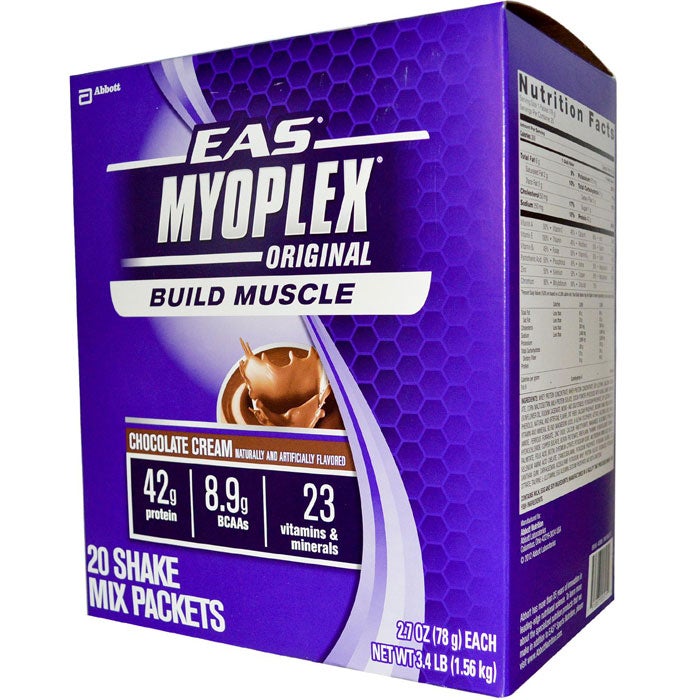
But EAS Myoplex earns a spot on our "worst" list for another reason: That same 2010 Consumer Reports study found that its Rich Dark Chocolate Shake contained the highest amounts of arsenic out of 15 shakes and powders tested: Three daily servings provided an average of 16.9 micrograms of the heavy metal, which is higher than the proposed limit of 15 micrograms a day. EAS stands by its product, stating that the drink's label clearly recommends no more than two servings per day.
Powerade and Powerade Zero
While PepsiCo-owned Gatorade bowed to consumer pressure in early 2013 to remove brominated vegetable oil (a synthetic flame-retardant chemical banned in Europe and Japan) from its products, Powerade's parent company, Coca-Cola, has made no such move to follow suit. Powerade also contains high-fructose corn syrup, a synthetic blend of sugars that's been tied to the nation's obesity epidemic.
That doesn't mean that its calorie-free line of Powerade Zero drinks (flavored with controversial sweeteners sucralose and acesulfame) is any better for you, though. “If you're working out for more than an hour, you don't want a low- or no-calorie sports drink,” says Lewin. “You need to replenish with real calories—this is not the time to be thinking about diet drinks.”
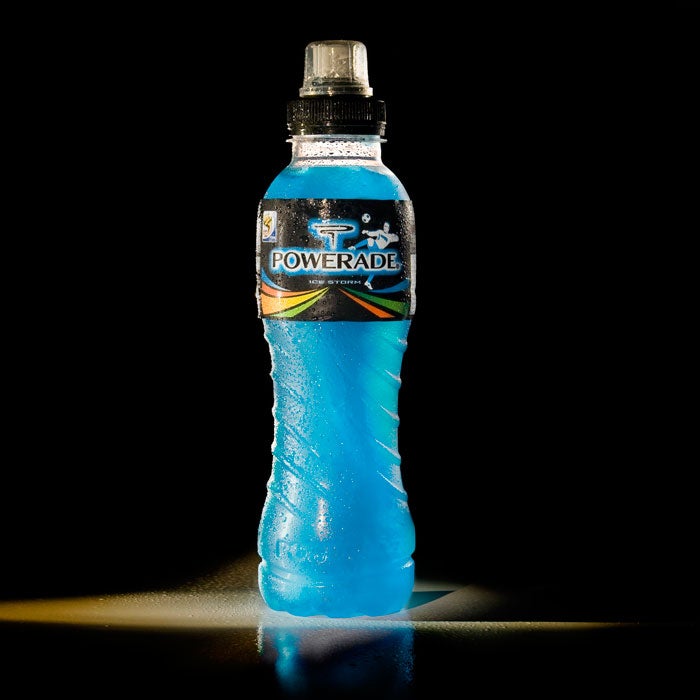
That doesn't mean that its calorie-free line of Powerade Zero drinks (flavored with controversial sweeteners sucralose and acesulfame) is any better for you, though. "If you're working out for more than an hour, you don't want a low- or no-calorie sports drink," says Lewin. "You need to replenish with real calories—this is not the time to be thinking about diet drinks." (Manuel Garcia/Flickr)
Oh Yeah! Protein Bars
“Some protein bars have as much as 8 grams of saturated fat,” says Lewin. “That's like eating a huge cheeseburger!” Take, for example, the Oh Yeah! bar, which prides itself on having a “gooey, candy bar-like taste” —thanks to some flavors' 370 calories and 18 grams of fat, 8 of which are saturated. (Think the “peanut butter and strawberry” flavor sounds healthy? It's got the highest saturated fat content of them all: 9 grams.) “People are eating these protein bars thinking they're doing something good for their bodies, but they're really filling it with pretty bad stuff,” Lewin adds.
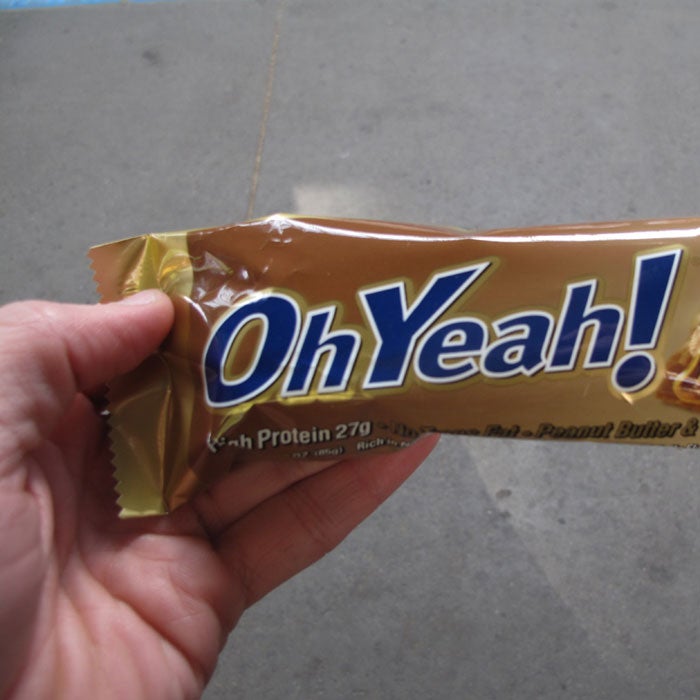
Frappuccinos
Yes, coffee can be great fuel for athletes: It's packed with antioxidants, and its caffeine has been shown to help enhance performance, to boot. But when it's combined with milk, cream, and flavor add-ins like chocolate and caramel, they become sugar and fat traps that will do little more than weigh you down in the long run. “They're high on the caloric density scale and low in nutrient density,” says Lewin. “In other words, they're a lot of empty calories.”
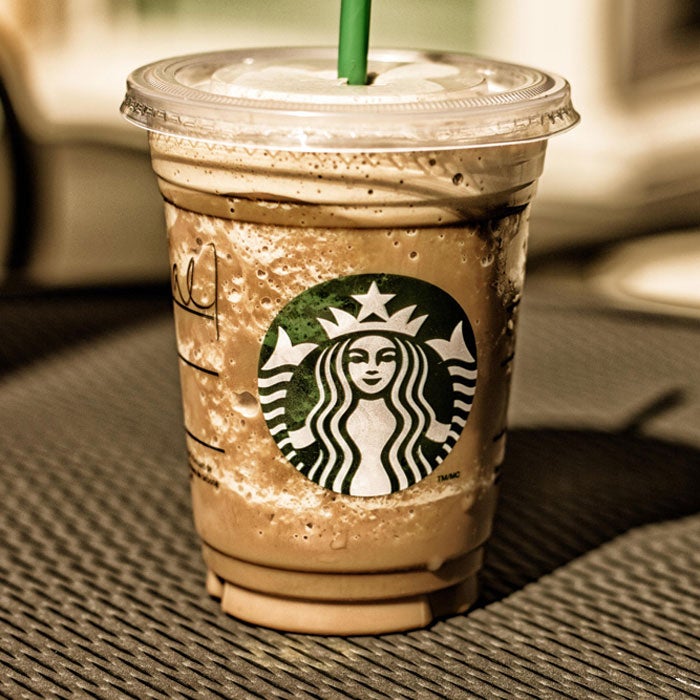
Quaker Chewy Dipps Granola Bars
Granola sounds healthy, since it's made with oats and nutritious ingredients like nuts and seeds. But often, its whole-grain goodness is offset by a sky-high sugar content or paired with less-than-healthy add-ins. A prime example? Quaker's Chewy Dipps Granola Bars—with flavors like Cookies and Cream, Chocolate Chip, and Caramel Nut, all coated in a soft candy shell. Each 140-calorie bar contains 4 grams of saturated fat, along with partially hydrogenated soybean, palm, and palm kernel oils—code for artery-clogging trans fats that have been shown to lower good cholesterol (HDL) while raising bad cholesterol (LDL).

Rockstar Punched Energy Drink
Rockstar sponsors extreme athletes—from BMX bikers to snowboarders to surfers—but that's about where the brand's athletic prowess ends. “These products contain a lot of sugar, a lot of caffeine, and lots of savvy marketing,” says Lewin, who advises her clients to avoid Rockstar, along with other competing energy drinks and shots. (Regular Rockstar contains 160 mg caffeine per 16-ounce can, while the Punched flavors contain a whopping 240 mg. A cup of coffee, in comparison, contains about 95 mg.)
Plus, Lewin cautions, “many athletes don't realize that caffeine isn't the only stimulant in these products.” Some drinks, like Rockstar, also contain guarana seed extract, which contains caffeine itself and has been linked to hospital admittances for caffeine overdoses. Lewin's bottom line: “If you're relying on these drinks to give you energy, it means you're doing something wrong.”

Plus, Lewin cautions, "many athletes don't realize that caffeine isn't the only stimulant in these products." Some drinks, like Rockstar, also contain guarana seed extract, which contains caffeine itself and has been linked to hospital admittances for caffeine overdoses. Lewin's bottom line: "If you're relying on these drinks to give you energy, it means you're doing something wrong." (Joserblue/Flickr)
Snapple Iced Tea
Bottled tea certainly isn't the worst thing you can drink, but it's likely not delivering all of the health benefits it promises, either. A 2010 study from the American Chemical Society tested six brands of bottled tea and found that they all had very few, if any, antioxidant properties. Some had such small amounts that you'd have to drink 20 bottles to receive the health benefits of one cup brewed from a tea bag.
Snapple lovers got more bad luck in 2013, when a ConsumerLab study found that the brand's diet green tea contained almost none of the powerful antioxidant green tea is known for, EGCG. When you also consider the fact that most bottled teas (including Snapple) are sweetened with sugar or artificial sweeteners, it's easy to see why brewing your own is a smarter choice.
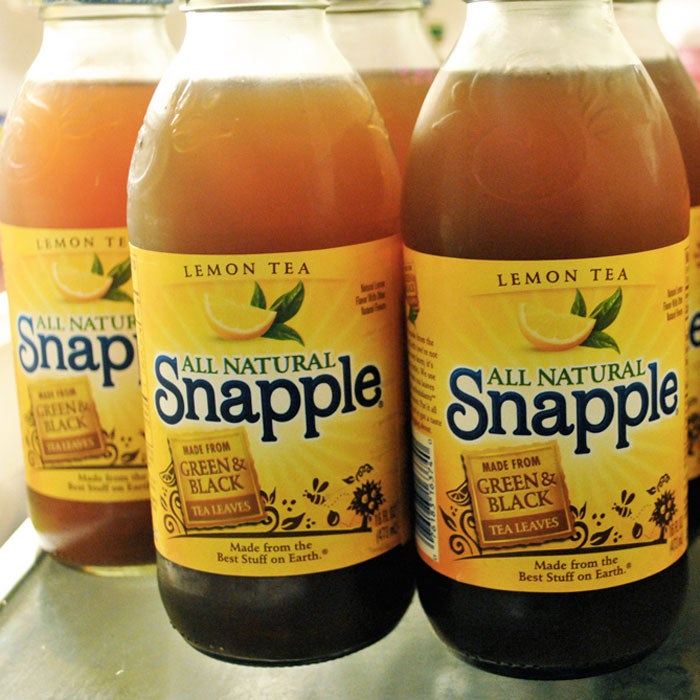
Snapple lovers got more bad luck in 2013, when a ConsumerLab study found that the brand's diet green tea contained almost none of the powerful antioxidant green tea is known for, EGCG. When you also consider the fact that most bottled teas (including Snapple) are sweetened with sugar or artificial sweeteners, it's easy to see why brewing your own is a smarter choice.

